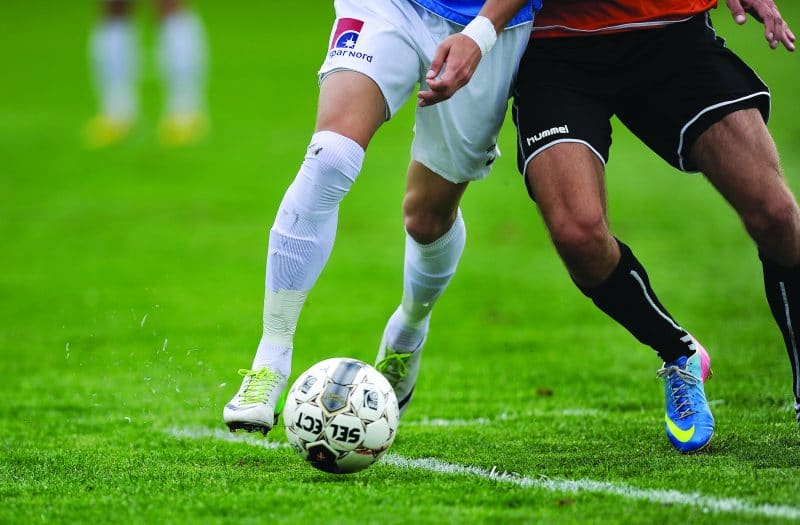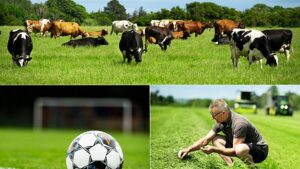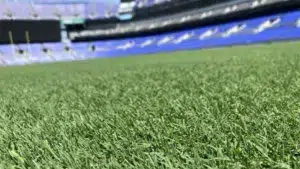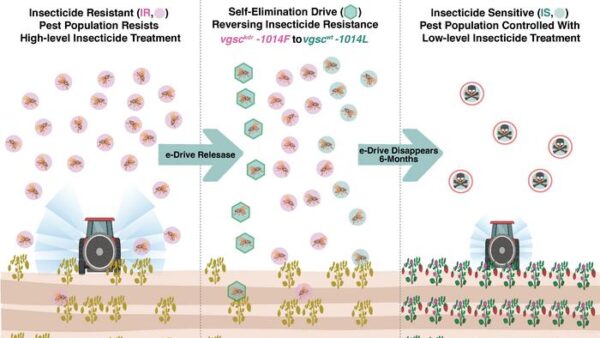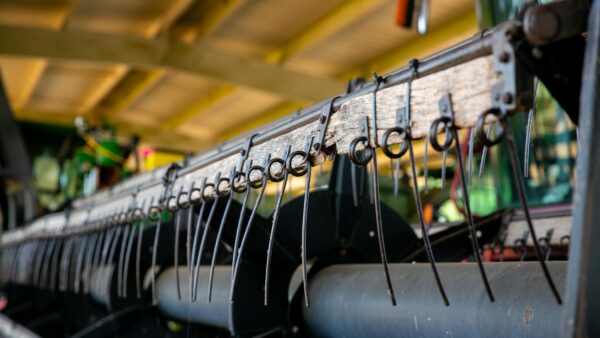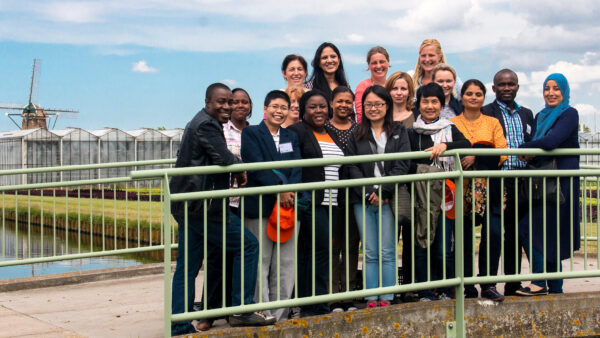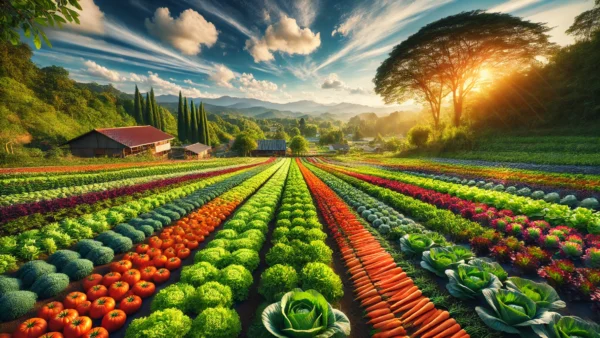Breeders at DLF, Germinal, DSV and Barenbrug weigh in on the importance of creating new ryegrass varieties.
With an annual production output of 90,000 metric tonnes (mt), perennial ryegrass accounts for almost 50 per cent of total grass production (forage and turfgrasses), making it the most important grass species in Europe.
Whereas perennial ryegrass accounted for approximately 40 per cent of turfgrasses compared with around 60 per cent of forage grasses 20 years ago, nowadays production volumes for forage and turfgrasses are more or less equal. If you allow for the fact that a significant proportion of forage grasses are used in homemade turf mixes, the share increases again.
The breeding objectives for turf and forage grasses focus on their respective uses. With forage crops, the aim is to obtain high yielding plants, which are as broad-leaved and fast-growing as possible. The constituents are also important because these crops provide a food source for cattle.
Usage also plays an important role with perennial ryegrass for turf. Varieties for ornamental lawns should be fine-leaved, whilst sports pitches require robust, hard-wearing varieties with good regenerative capabilities, so bare patches created by intensive use, for example, can quickly recover. Tolerance of cutting is also important (frequency and height), as golf courses, in particular, are mown very often and very close.
Climate and location also must be taken into consideration. For example, some varieties, such as variety Pascal, are bred for the dry, warm climate of the Mediterranean, while a winter -ardy variety, such as variety Promotor, is ideal for northern and eastern European climates.

Perennial Ryegrass Markets
These markets are very different from arable crop markets. As a generalisation, both the amenity and forage markets have sectors where price is the main driver and sectors where quality is king. To further complicate the issue, most ryegrass is sold in mixtures with other ryegrasses and grasses. This allows suppliers to ‘salt’ a mediocre mixture with a small quantity of quality material, and focus on the fact the mixture contains ‘X’.
In some countries, most grassland is regularly renewed in order to maximise forage production. In other areas, there is little replacement. For example, the Netherlands replaces approximately 11 per cent of its grassland yearly. The UK only renews two to three per cent yearly. This is reflected in average forage production per hectare, which is much higher in the Netherlands than in the UK.
Recognition of the increased production available from better grassland management and renewal has the potential to greatly increase the market size.
Amenity and Agricultural Grasses: Future Markets
If, as forecasted, there is an increased demand for food, arable areas in the world will have to concentrate on crops to feed people and monogastrics. Ruminants may be pushed to non-arable areas. There is already evidence of this in Argentina, where soybean and maize have pushed beef cattle out of traditional areas.
Assuming the demand for meat and milk products remains high, then agricultural grassland productivity will become more important. In the short term, the current low prices for all agricultural products may drive the inefficient farmer out of business. These low prices will hurt the entire agricultural supply industry. Better grassland farmers renew their grass regularly, so the future for agricultural grass variety breeding is safe.
The amenity grass market should remain fairly stable. It is affected by general economic well-being, large projects and housing construction. However, the general golf market sector is declining, and the building of new courses seems to have stopped. Cycling fever is damaging golf clubs, as people spend their leisure time on a bicycle rather than a golf course.
Turf Breeding Targets
Breeding targets for turf in Europe are, to a large degree, driven by official or private testing systems, which rank varieties according to various parameters. The rankings are published in national variety lists, of which the most important are the German Recommended Seed Mixture (RSM) list, the French Les variétés de Graminées à gazon, the UK Turfgrass Seed, the Dutch Gras Gids and the Scandinavian Scanturf list.
In order to sell to professional turf users, such as golf courses and high-ranked football stadiums, it is important to have varieties in the top of these ranked lists. Accordingly, there is strong competition among breeders to generate new varieties, which make it to the top of these lists. This is a great advantage for grass users, who will regularly receive the best-performing varieties available.
The overall breeding target in turf is to produce the best possible sward quality. This means turfgrass breeders seek to develop varieties that produce attractive, green, dense and fine-leaved swards all year round, under different climates or managements. Such conditions include the following:
- hot, dry conditions in France, Italy, and Spain;
- cold conditions in Scandinavia, central and eastern Europe;
- mild and humid summers in the UK;
- tolerance to various diseases associated with different climates, such as crown rust in France or snow mould in Scandinavia;
- tolerance to wear for grasses used on sports fields; and
- tolerance to close mowing for grasses used on golf courses.
While breeding for these conditions is a challenge in and of itself, the competitive production of a variety is strongly correlated to its seed yield. Hence, breeding for quality cannot compromise an acceptable seed yield. As an added challenge for the breeder, there is a negative correlation between turf quality and seed yield for many turfgrass species.

Success in the Stadium
Maximum density and wear resistance combined with good disease resistance, good recovery and a mid-green leaf colour are the key criteria when selecting varieties for reseeding mixtures for professional sports pitches, which consist almost entirely of perennial ryegrass, due to its rapid germination and establishment.
After all, conditions in the stadium are far from ideal: light conditions—especially in the winter months—are very low, poor air exchange rates increase disease pressure, and, at the same time, opportunities for disease control are limited.
The sward requires special care due to the artificial structure of the soil. High stresses, especially in winter months, combined with unfavourable weather conditions (e.g. high rainfall) lead to a decline in grass quality. Varieties that are suitable for sporting activities and tend to germinate early, even when soil temperatures are still low, are particularly sought-after.
Forage Breeding Targets
Plant breeding in forage grasses for European markets is driven both by direct demands from the market and by those set up in the testing systems in different countries. For a variety to be marketed in Europe, it is a legal requirement to be included on an official variety list in an EU country.
The listing is based on the agricultural value of the variety relative to already listed varieties. In general, any new variety must be as good as the listed varieties, and surpass listed varieties in at least one of the eligibility criteria. When a variety has entered a variety list in an EU country, it can be sold throughout Europe.
Traditional Breeding Programmes
Traditional breeding has been succinctly described as, “cross the best with the best, and hope for the best”. Big investment is required for field trials to find out which, if any, of the crosses were worthwhile. In addition, any proper forage grass breeding programme must have access to a Haldrup-type plot harvester, and should also be able to measure grass quality.
A basic forage grass breeding programme with one breeder and minimal facilities costs approximately £200,000 per year. In addition, there is no guarantee any programme will produce successful new varieties.
As with other crops, grasses that suit one area often do not perform as well in other regions. This means any new variety has a limited potential market. For example, disease may be a critical factor in one area, however, a small climatic difference can make the same disease irrelevant a few hundred miles away. In addition, a variety that will grow year-round may suit areas such as parts of New Zealand and Ireland, but would be killed by the cold winter in mainland Europe. Also, the forage perennial ryegrass market is subdivided by ploidy levels (diploid and tetraploid) and heading date groups (early, intermediate and late).
The simple economics of cost and return on investment have resulted in a large reduction in the number of grass breeding companies over the past 40 years. However, the market remains extremely competitive, partly due to the continuing market share of varieties whose principal merit is low cost.
Local Adaption Requirement
In several EU countries, the forage market is a quality market, and efficient sales require local recommendation in specific markets. The local adaptation requirement is due to differences in environment and use, depending on economy and traditions.
In Ireland, as a result of its moist, mild climate, continuous grass growth during the season is ideal for grazing, and costs for investments in facilities for silage production and sheds can be reduced. In highly concentrated production units, such as the Benelux countries, investments are more intensive, both in land and production facilities, and bigger units in shed feeding systems are normal.
Forage Grass: Grazing and Silage
Differences in production systems cause different requirements for varieties. Varieties for grazing should have good palatability, poaching resistance, low stem regrowth, good rust resistance and high digestibility to meet the animals’ needs. They will also require high production in early spring and late fall to maintain steady levels over the season, whereas high summer production may not be a necessity.
For silage use, the main target is high biomass production. Density and palatability requirements are less of an issue; with the increasing size of machinery, some kind of wear tolerance may be needed in the future. Silage is normally used together with other roughage, such as maize, so the digestibility of the fibre fraction is more important than the shared digestibility, to make the ideal combination. Systems are combined in several ways, and, in some places, it is common practice to graze paddocks in periods with low forage production and produce silage during peak production.
Farming Systems Affect Demand
As farms grow bigger, they tend to shift from grazing- to silage-based production. As we expect the trend for bigger farms to continue, forage grass breeding will reflect an increased demand for silage types. On the other hand, we also observe a trend toward increased organic farming in several countries, which will increase the demand for grazing-type varieties.
Forage Grass Mixtures: Individual Needs
As farmers use grasses in mixtures, breeding targets will address a specific mixture type. A grazing mixture contains early and late varieties to cover production during the year. To ensure an adequate protein content, clovers are often added. A mixture may also contain tetraploid varieties to ensure good silage production, and, if prone to drought, other species, such as tall fescue, may be included.
In addition, crossing between species is also used in many mixtures. Hybrid ryegrass, which originates from crosses between Italian and perennial ryegrass, will enhance production in the spring from the Italian parent, and ensure longer lays from the perennial parent. Festuloliums combine high forage quality from ryegrass with persistency and drought tolerance from fescues into one hybrid variety.
Breeding Targets: Different Regions and Disease Resistance
Overall, the main breeding target is high dry matter yield, and forage varieties are plot-tested throughout Europe for the same reason. The importance of other traits differs with environment and production system type across Europe. Most countries conduct national and local testing and provide regional recommendations. Breeding goals according to region include the following listed below.
In Northern and Western Europe, where the oceanic climate, mild winters and adequate moisture favour high grass production of high quality, the main targets are yield and quality. The main forage species is perennial ryegrass. Plant diseases can be a problem in some years and locations, so resistance to rust and leaf spot (Helminthosporium) is an additional breeding goal.
In Scandinavia, breeding targets resemble some of the local conditions of the mountains of western Europe. These conditions require winter hardiness and snow mould (Fusarium) resistance, which may compromise the requirement for high yields. The choice of species may lean toward more winter persistent types, such as timothy, but intermediate tetraploid perennial ryegrass is a good solution due to its high quality.
For Eastern Europe, a more continental climate prevails, and moisture is often a limiting factor in addition to tough winters and high summer temperatures. Important traits include drought tolerance and high yields at the beginning of the season, when moisture still allows for production.
In Southern Europe, the Mediterranean climate provides warm, dry summers and humid, mild winters. Drought tolerance and disease resistance are of major importance. In France, rust resistance is, therefore, an important score on the national variety list. The choice of species may favour drought-resistant types, such as tall fescue and cocksfoot, to maintain production during the summer. Perennial ryegrass is less productive at temperatures above 25°C, which limits its use in hot areas. If the summer is very dry, the choice of forage may shift to annual species to boost production in the winter and spring.
Forage Breeding Accomplishments
Because grass breeding is a time-consuming process, varieties normally stay on the market for a relatively long time. For instance, Romark, an intermediate diploid perennial ryegrass variety on the Dutch market, listed for the first time in 1995. In addition, Tivoli is still a highly valued, late tetraploid variety on the German list RSM since 1988.
Normally the lifespan of a variety is five to 10 years. The speed of development of new varieties depends on breeding strategy and the number of genes involved in the trait to be improved. For example, the development of rust resistance, which is most likely controlled by few genes, has been fast; whereas, more complex traits, like dry matter yield, have also improved consistently, albeit at a much lower pace. While changes in agricultural management account for half of the annual gains in forage yield, the remaining can be related to genetic gains. Sometimes trait development occurs in jumps. For example, the perennial ryegrass Sputnik entered the Dutch list with an impressive yield increase of about 5 per cent.
In addition, many European breeding companies have also managed to make big improvements to variety persistence. However, arguably, the most important advances have been in grass quality. Better quality means better yields of milk and meat. Better quality also goes hand in hand with lower emissions of nitrogen. There is also evidence higher quality forage reduces methane emissions from grazing animals.
The breeding programme at Aberystwyth University was the first to recognise the importance of grass quality and how it affects animal performance. The high water soluble carbohydrate ‘Aber’ varieties of forage ryegrass demonstrate the progress that has been made. Attention is now being given to other quality aspects, such as lipid levels.
Breeding for the Future
A typical grass breeding programme takes from 12 to 15 years from the beginning of the breeding cycle until the variety is on the market.
It is highly challenging for any plant breeder to foresee what will happen in the future. It is quite clear that dry summers may become more common in many European regions, and therefore drought tolerance is an area of major focus in many breeding programmes today.
It is also possible insect damage will become a bigger problem in the future, due to climate change. Recently, DLF has started two new breeding projects, which target these challenges: one project focuses on developing varieties with better and longer roots, and the other on developing endophytic fungi to protect the roots from damaging insects.
Deep Root Selection
With the hypothesis that drought tolerance is correlated with rooting depth, four Danish breeding companies collaborated with three Danish universities to create a facility where plants can be selected for deep rooting while simultaneously undergoing thorough scientific investigations.
The project, called RadiMax, aims to develop drought-tolerant crops in wheat, barley, potato and grasses, as well as create genomic models that will allow breeders to predict rooting ability in new material solely based on a DNA test.
Endophyte Solutions
Endophytic fungi can be found in most cool-season grasses throughout Europe. Ryegrass, meadow fescue and tall fescue receive sugars in exchange for alkaloids, which protect the grass from insects. However, the natural endophytes in ryegrass only protect the base of the plant and not the roots. DLF is currently working on developing endophyte solutions, which will protect both the top and the roots of the plant from insect attacks.
NIR and Ryegrass Breeding
In recent years, the development of technologies to measure quality parameters online have improved considerably with the use of near-infrared reflectance (NIR) spectroscopy.
When an infrared light beam is reflected from a substance, the wavelengths can be used to estimate the content of various components. NIR is used in grass breeding for online measurements of moisture content on grass harvesters. Companies have extended the use of NIR to other quality parameters, such as digestibility, content of water soluble carbohydrates and protein, as well as the quality of fibre fractions. Each year, 150,000 to 200,000 plot scans are collected with a fleet of grass harvesters, all mounted with NIR scanners.
Editor’s Notes:
DLF is a global market leader in the grass seed industry running a worldwide breeding network as well as production and sales of clover and grass seed. Develops locally adapted forage and turf products for a wide range of climates and soils, as well as specialty products for specific applications.
With group companies based throughout the British Isles and a strong network of business interests worldwide, Germinal is involved in the agricultural and amenity sectors, delivering quality and customer service from breeding and assessment, through to the production and marketing of seed.
DSV focuses on breeding, production, advisory services and sales, with the main emphasis on turf and forage grasses, oilseed rape, maize, cereal crops and cover crops, making it a ‘one-stop shop’. DSV has various seed breeding and testing stations, plus a number of testing sites in Germany and abroad staffed by a 600-strong workforce.
For more than 100 years, the Royal Barenbrug Group has been a family-owned business, the core activities of which are plant breeding, grass seed production and the international marketing of seed for turf and forage grasses and legumes.


